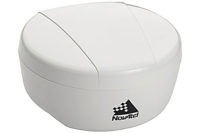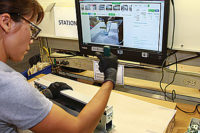Although a small business, Sechan Electronics is one of the most respected electronics assembly companies in the United States. Based in Lititz, PA, it develops, manufactures and tests military electronics systems and subsystems for the Department of Defense and its prime contractors.
Sechan’s services include circuit board assembly, wiring harness assembly and final assembly. In addition, Sechan can act quickly to change the configuration of any product in terms of how it will be used in the field.
Every time the company makes a product change, it must be communicated to subassembly and assembly departments in seven documents. Until about four years ago, Sechan used detailed paper work instructions to ensure that all the changes were in place.
To create the instructions, company engineers had to cut, paste and drag information and images from a data base into a Word or other work document. The problem was, in Sechan’s high-mix, low-volume manufacturing environment it was not uncommon to have hundreds of product changes per day in 30 to 50 active projects—as many as 500 changes over the life of any one project.
“We would grab these documents, manually redline them, accumulate the changes, withdraw them from the floor and replace the changed pages with the updated information,” says Steven L. Kaylor, vice president of operations for Sechan Electronics. “There was one individual who spent all of his time running around notifying people that certain work instructions were on a recall list. Then he would locate all the copies and check off on a master list that every copy had been updated or redlined. It was a never-ending struggle.”
Eventually Kaylor looked into Sequence software, which eliminates the need for paper work instructions.
Made by FFD Inc., the software instructions provide clear, concise direction to workers. The instructions include real-time change control, a direct link for operator feedback to the responsible manufacturing engineer, and a capture feature for multimedia (audio, video, CAD) to enhance process learning and direction.
Kaylor says the software has reduced Sechan’s overhead costs. It also enables the company to instantly deploy redlines to the assembly floor, resulting in manufacturing engineering capacity gains of more than 20 percent.
“By eliminating a staff position to maintain the paper process, we save $60,000 annually,” says Kaylor. “Plus, we do not have to recover and update paper documents.”
Kaylor says Sechan has achieved a 95 percent reduction in total change implementation cycle time. To arrive at that number, the company calculates the time it would take to update the documents and get them back to the floor.
“From a supervisory standpoint, it eliminates the need to point out to people what has changed,” says Kaylor. “Now we just make the change and put it behind us. Our highly skilled staff spends more time on manufacturing the products and less time waiting on work instruction changes.”
For more information on paperless work instructions, call 866-863-7541 or visit www.sequencesoftware.com.



